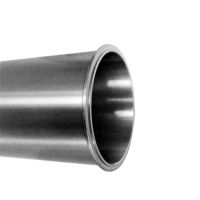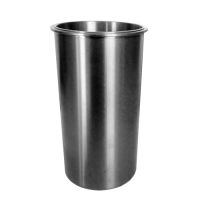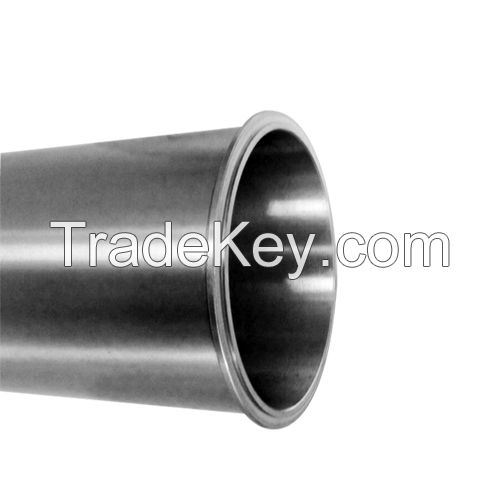The companys cylinder liner generally applies the
materials of wear-resistant alloy cast iron containing
chromium or boron, such as HT25-47, HP-CuCrMo, etc. The
inner surface of the cylinder liner is also sometimes chrome
plated (loose hole chrome plating, chrome plated toil storage
outlets), and nitrating or phosphating treatment to
improve wear resistance. The inner surface hardness of cylinder
liner is usually greater than HB200, and has a good match with
the hardness of piston ring. The inner surfaces would have
appropriate roughness to make it have a certain oil storage
capacity and running-in performance. The inner surface
should be of sufficient roundness and cylindricity accuracy,
and the mounting support should have a high positional accuracy
against the inside bore center.
The inner surface of cylinder is easy to wear because of high
temperature and high pressure gas and contact with pistons
at high-speed motion. In order to improve the wear resistance and
prolong the service life of the cylinder, different cylinder
structure and surface treatment methods are provided. There
are three types of cylinder structures: no
cylinder liner type, dry cylinder liner type,
wet cylinder liner type.
Non-cylinder liner type means that no cylinder
liner body is embedded, and the cylinder body is directly worked
out of the body, which has the advantages of shortening the
cylinder center distance andreducingthe size and the
weight of the body. But the cost is high.
Dry cylinder liner is not in contact with the
coolant, with the wall thickness of 2~3mm, the outer
surface and cylinder liner seat holeinnersurface must be refined
to ensure the necessary precision and easy removal, which has the
advantages of high rigidity, small central distance of the
cylinder, light weight and simple processing technology. The
disadvantage is that the heat transfer is poor, the temperature
distribution is uneven, and the local deformation is easy to
occur.
The outer wall of wet cylinder liner is in direct contact
with the coolant,withthe wall thickness of
5~8mm,whichrealizes the radial positioningbyusing the upper
and lower positioning ring, and realizes axial positioning with
the help of corresponding bearing surface mating between the
upper flange of cylinder liner and the top of the body, which has
the advantages of the absence of sealed water jacket on the
body, easy casting, good heat transfer, even
temperature
distribution and easy repair without removing
theenginefromthe vehicle when replacing the cylinder liner.
But the body stiffness is poor, and easy to leak.







